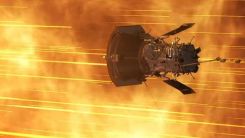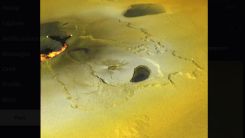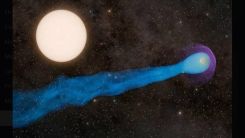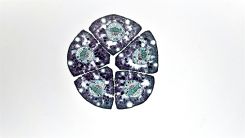
Madz Dizon


Candy Canes Are Bad for Your Health — Here's Why

Are Elves Real and Why Do They Work for Santa?

The Science Behind Santa's Preference of Reindeer to Pull His Sleigh

How Fast Does Santa Need to Be to Deliver All Presents on Christmas Eve?

Why Do We Hang Stockings at Christmas Time?

Why Is Gingerbread a Favorite Christmas Treat?

Christmas Tree Facts: Origin, Traditions and More

Persistent Coughs Are Everywhere: Here's What Experts Think Is Causing It

Mysterious Streak of Light Over New Orleans Explained: Astronomer Confirms Satellite Re-Entry

NASA's Parker Solar Probe Redefines Limits With Closest Approach to Sun

Avian Influenza Surge Prompts Emergency Declaration in California

'Obelisks' Found Inside Half of the World's Human Population Could Act as 'Stealthy Evolutionary Passengers'

Astronomers Reveal Mysterious Plasma Channels in the Milky Way

Are California Squirrels Carnivorous? Bizarre Behavior Observed by Scientists in Local Rodents

Mystery Object That Struck Part of the Moon Captured by Astronomer From Japan

Charged Particles From Sun Hit Earth: Here's What Scientists Expect to Happen Next

Why the Barn Owl's Gleaming White Underbelly Is a Strategic Advantage for Hunting

What Is Mirror Bacteria? Scientists Sound Alarm Over Potential Dangers

Why Jupiter's Moon Io Is So Volcanically Active: NASA Finds the Answer

First-Ever Black Hole Image Site Experiences Powerful Gamma-Ray Flare

Nearby Exoplanet's Tail Grows to 350,000 Miles, Outshining Earth

Massive Underground Energy Source Could Power Earth for Thousands of Year, Scientists Say

Did Humans and Neanderthals Interbreed? New DNA Analysis Claims So

How 'Conan the Bacterium' Survives Deadly Radiation: New Study Reveals Key Antioxidant

First Glimpse of Milky Way's Origins: Webb Telescope Unveils Starry 'Firefly Sparkle' Galaxy

NASA's Juno Mission Unravels Volcanic Mysteries of Jupiter's Moon Io

Dead Cells Could Hold the Key to Life, New Mathematical Model Suggests

Giant Predatory Amphipod Discovered Thriving 8,000 Meters Below in Extreme Deep-Sea Environment

Mysterious 'Dark Comets' Found to Have Two Unique Types, Study Reveals
Most Popular

Space Tourism Future: How Commercial Space Travel Will Transform Civilian Exploration

Universe Origin Revealed: Exploring the Latest Big Bang Science Theories and Discoveries

How Space Observation and the Solar Light Spectrum Make the Sun Look Different in Space Than on Earth

Tree Communication Explained: How Underground Fungi Networks Connect Entire Forests




